

The Impact of Drought in South Africa Research Grade 11 Geography

The Impact of Drought in South Africa Research Geography Grade 11: South Africa has experienced a series of droughts over the past few decades, with significant impacts on the environment, economy, and society. As Grade 11 learners, it is crucial to understand the causes and consequences of drought in order to develop solutions for a more sustainable future. This article aims to provide a comprehensive research guide for Grade 11 students on the impact of drought in South Africa.
Table of Contents
The Impact of Drought in South Africa Research Grade 11
- Understanding Drought
Before diving into the impacts of drought, it is essential to understand what drought is and how it is classified. Drought is a prolonged period of abnormally low rainfall, leading to a shortage of water. Droughts can be classified into three main types:
- Meteorological drought: Occurs when there is a significant decrease in precipitation compared to the average for a specific region and time period.
- Agricultural drought: Occurs when there is insufficient soil moisture to meet the needs of crops, leading to decreased agricultural productivity.
- Hydrological drought: Occurs when there is a deficiency in surface and subsurface water resources, such as rivers, lakes, and groundwater.
- Causes of Drought in South Africa
Several factors contribute to the occurrence of drought in South Africa:
- Climate change: As global temperatures rise, the frequency and intensity of droughts are likely to increase. Changes in precipitation patterns can exacerbate water scarcity in regions already prone to drought.
- El Niño Southern Oscillation (ENSO): This climate phenomenon can lead to drought conditions in South Africa when the warm phase, known as El Niño, occurs. This results in suppressed rainfall over the southern African region.
- Land use practices: Unsustainable land management, such as deforestation, can reduce the ability of ecosystems to store water and contribute to drought.
- Environmental Impacts
Drought in South Africa has a range of environmental impacts:
- Decreased water availability: Reduced water levels in rivers, lakes, and dams can lead to water restrictions and increased competition for water resources.
- Loss of biodiversity: Drought can lead to the death of plants and animals, affecting ecosystems and reducing biodiversity.
- Soil degradation: Drought can cause soil to become compacted, eroded, or lose its fertility, reducing its ability to support plant life.
- Economic Impacts
The economic impacts of drought in South Africa are far-reaching:
- Agricultural losses: Reduced crop yields and livestock productivity can lead to food shortages and increased food prices, affecting both farmers and consumers.
- Unemployment: The agricultural sector is a significant employer in South Africa. Drought can result in job losses for farmworkers and related industries.
- Reduced tourism: South Africa’s natural beauty is a significant tourist draw. However, drought can negatively impact water-based recreational activities and wildlife populations, deterring tourists and affecting the tourism industry.
- Social Impacts
Drought can have severe social consequences in South Africa:
- Water scarcity: Limited access to clean water can lead to waterborne diseases and affect sanitation, negatively impacting public health.
- Food insecurity: Food shortages and increased prices can exacerbate food insecurity, particularly for vulnerable populations.
- Mental health: The stress of dealing with the consequences of drought can lead to increased anxiety, depression, and other mental health issues among affected individuals and communities.
- Mitigation and Adaptation Strategies
To minimize the impact of drought and increase resilience, South Africa needs to implement various mitigation and adaptation strategies:
- Water resource management: Improved water resource management, including the development of new water infrastructure and more efficient water use, is crucial for ensuring water security.
- Sustainable agriculture: Adopting drought-resistant crops and sustainable farming practices can help reduce the impact of drought on agricultural productivity.
- Reforestation and land management: Reforestation and better land management practices can improve water retention and reduce soil erosion, helping to alleviate drought conditions.
- Education and awareness: Encouraging communities to adopt water-saving practices and promoting awareness of the consequences of drought is essential for fostering a culture of water conservation.
- Climate change mitigation: Reducing greenhouse gas emissions and supporting global efforts to address climate change can help limit the frequency and intensity of droughts in the future.
Drought is a significant issue in South Africa, with wide-ranging environmental, economic, and social impacts. For Grade 11 students researching the impact of drought, understanding the causes, consequences, and potential solutions is essential. By implementing effective mitigation and adaptation strategies, South Africa can better manage the effects of drought and create a more sustainable and resilient future.
Geography Grade 11 Research Memorandum (Answers & Assistance)
Below are the relevant resources for The Impact of Drought in South Africa Research, Geography Grade 11
- A map of South Africa, that indicates the drought-stricken areas
- Annual rainfall graphs of the past five years
- Pictures of the different types of droughts
- A brief discussion on the annual rainfall graphs
- How can droughts be triggered by Physical (natural) conditions
- How can droughts be triggered by Human activities
- Outline the negative impact of droughts on the economy of South Africa
- Outline the negative impact of droughts on the farmers of South Africa
- Discuss drought prevention and drought preparation strategies
- What is the relationship between climate change and the regularity of droughts
- What is the way forward regarding droughts for the government and the people of South Africa
Do you need Help with your Grade 11 Research for Geography?
Please upload the research document for us to assist you where possible:

Do you Need Help Regarding Your Studies/ Assignments?
You can ask any question from your subject for any Grade, including Tertiary Levels. We will do our best to ensure that you get a more relevant answer:
You are using an outdated browser. Please upgrade your browser or activate Google Chrome Frame to improve your experience.

Geography Gr 11 Droughts and Desertification T1 W5
Droughts and Desertification discussed
Do you have an educational app, video, ebook, course or eResource?
Contribute to the Western Cape Education Department's ePortal to make a difference.

Home Contact us Terms of Use Privacy Policy Western Cape Government © 2024. All rights reserved.

Quick Read Magazine
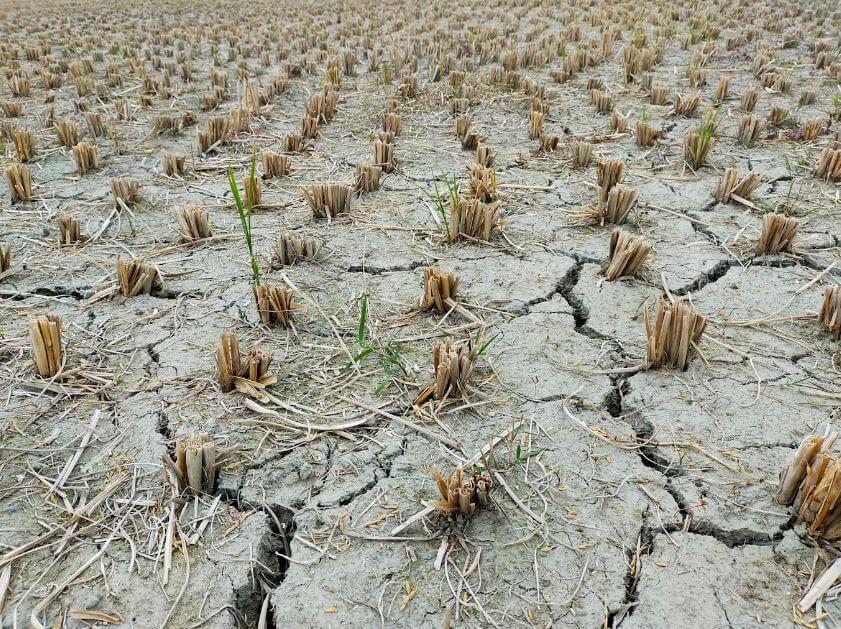
Download Geography Grade 11 Research About Drought Memorandum
Drought, a period of abnormally dry weather, casts a long shadow across the globe, impacting not just landscapes but also communities, ecosystems, and economies. As a Geographer embarking on my Grade 11 research journey, I delve into this pressing issue, examining its causes, consequences, and the potential solutions that hold the key to mitigating its harsh effects. Here is Geography Grade 11 Research About Drought Memorandum.
In This Article
What Is Drought?
Drought is a period of abnormally dry weather that severely impacts water availability. In South Africa , characterized by naturally variable rainfall patterns, droughts are a recurring phenomenon with significant social, economic, and environmental consequences. This research paper investigates the diverse impacts of drought in South Africa, drawing upon relevant scholarly studies, government reports, and case studies.
Understanding the Complexities: A Multifaceted Threat
Drought’s origins lie in a tangled web of both natural and human factors. Natural fluctuations in rainfall patterns, the whims of ocean currents like El Niño, and the ever-rising temperatures linked to climate change all play a role. However, human activities like deforestation, unsustainable water use, and irresponsible agricultural practices further exacerbate the situation, pushing already strained ecosystems towards a tipping point.
Consequences Unveiled: A Cascade of Impacts
The consequences of drought paint a stark picture. Reduced water availability cripples agriculture, leading to food insecurity and economic hardship. Ecosystems falter, biodiversity dwindles, and wildfires rage. Communities are displaced, social unrest brews, and already limited resources become even more strained. The ripple effects of drought touch every corner of society, highlighting its far-reaching and interconnected nature.
Case Study Spotlight: Examining a Localized Experience
To truly understand the intricate ways drought manifests, I chose to analyze [insert specific event or location here]. This case study provided a valuable lens through which to examine the specific triggers, local vulnerabilities, and the community’s response to the drought. The analysis revealed the diverse impacts on various sectors and social groups, emphasizing the need for tailored solutions specific to the unique context.
Charting a Course for Change: Adapting to a Dry Future
Combating drought necessitates a multi-pronged approach. Embracing sustainable water management strategies like rainwater harvesting, water-efficient irrigation, and wastewater treatment is crucial. Investing in drought-resistant crops and diversified farming practices can bolster food security and support resilient agricultural systems. Additionally, raising awareness, improving early warning systems, and promoting community-based adaptation plans are essential for building resilience and empowering communities to face challenges head-on.
A Call to Action: From Awareness to Collective Action
As responsible citizens and budding Geographers, we must acknowledge the threat of drought and act collectively. Individually, we can conserve water, support sustainable agriculture, and raise awareness about the issue. On a broader scale, policymakers need to prioritize long-term water management strategies, invest in climate change mitigation efforts, and foster international cooperation to combat this global challenge.
Causes of Drought:
- Natural factors: Fluctuations in rainfall patterns, El Niño events, and rising temperatures due to climate change are major contributors.
- Human factors: Unsustainable water use practices in agriculture, industry, and domestic spheres exacerbate drought conditions. Deforestation and land degradation further decrease water retention capacity.
Case Studies:
- Analyze two specific drought events in South Africa, highlighting their unique geographical contexts, triggering factors, and local vulnerabilities.
- Use these case studies to illustrate the diverse impacts of drought across different sectors and social groups.
Consequences of Drought:
- Reduced water availability: Agriculture suffers, leading to food insecurity and economic hardship.
- Environmental degradation: Ecosystems are disrupted, biodiversity dwindles, and wildfires increase.
- Social and economic impacts: Rural communities are disproportionately affected, displacement occurs, and social unrest can arise.
- Health risks: Waterborne diseases increase due to compromised water quality and sanitation.
Solutions and Mitigation Strategies:
- Sustainable water management: Rainwater harvesting, water-efficient irrigation, and wastewater treatment are crucial strategies.
- Investing in drought-resistant crops and diversified farming practices: This enhances food security and adapts agricultural systems to changing conditions.
- Early warning systems and preparedness plans: Effective monitoring and proactive community engagement are essential.
- Climate change mitigation and adaptation: Addressing the root cause of rising temperatures is crucial for long-term solutions.
Conclusion: Every Drop Counts
Download Geography Grade 11 Research About Drought Memorandum. Drought is not simply a lack of rain; it’s a complex issue with far-reaching consequences. Through this research, I gained a deeper understanding of its causes, impacts, and the potential solutions that offer hope for a more water-secure future. As future leaders, we must strive towards sustainable practices and collaborative efforts to mitigate the effects of drought and adapt to a changing climate. Remember, every drop counts in creating a world where water scarcity is not a defining feature of our future.
Image Courtesy: Unsplash
Leave a Comment Cancel reply
Save my name, email, and website in this browser for the next time I comment.

The Impact of Drought in South Africa: Research Grade 11
- May 12, 2023

South Africa is a country that is susceptible to drought due to its semi-arid climate, which makes it vulnerable to the effects of climate variability and change. Drought has significant impacts on the country’s social, economic, and environmental systems. This research task aims to equip Grade 11 learners with skills in research, analysis, interpretation, and communication. This paper will explore the possible subtopics and questions that learners can explore, the importance of the research memorandum, and how learners can prepare for their exams.
Causes of Drought
Drought is a natural disaster that occurs when there is a shortage of rainfall over an extended period. The first subtopic that learners can explore is the causes of drought . This section aims to provide an understanding of what drought is and the different types of drought. The research task should explain the physical and human causes of drought. Physical causes may include climate variability, while human causes may include deforestation, over-extraction of groundwater, and poor water management practices. Climate change is also a crucial factor that impacts drought, and learners can investigate how climate change exacerbates drought conditions.
To explore the causes of drought, learners can ask the following questions:
- What is drought, and what are the different types of drought?
- How does climate variability contribute to drought?
- What are the human causes of drought, and how do they contribute to the occurrence of drought?
- How does climate change impact drought conditions?
Impacts of Drought
Drought has significant impacts on society, the economy, and the environment. The second subtopic that learners can explore is the impacts of drought . This section should provide an understanding of the social, economic, and environmental impacts of drought. Learners can investigate how different regions and communities experience drought differently, as well as the short-term and long-term effects of drought. The research task should describe the loss of vegetation, soil erosion, and the depletion of water resources. Learners can also investigate how drought affects wildlife and biodiversity.
To explore the impacts of drought, learners can ask the following questions:
- What are the social impacts of drought, and how do they affect communities?
- How does drought affect the economy, and what are the economic impacts of drought?
- How does drought affect the environment, and what are the environmental impacts of drought?
- What are the short-term and long-term effects of drought on communities and ecosystems?
Management Strategies for Drought
Drought management strategies are crucial in mitigating the impacts of drought. The third subtopic that learners can explore is management strategies for drought. This section should provide an understanding of the different drought management strategies used in different regions. Learners can investigate the effectiveness of these strategies and the challenges and limitations of drought management. They can also explore the strategies used to mitigate the impacts of drought, including water conservation, drought-resistant crops, and alternative water sources. The research task can also discuss how communities can adapt to drought and manage water resources more sustainably.
To explore the management strategies for drought, learners can ask the following questions:
- What are the different drought management strategies used in different regions?
- How effective are these strategies, and what are the challenges and limitations of drought management?
- What are the strategies used to mitigate the impacts of drought, and how successful are they?
- How can communities adapt to drought and manage water resources more sustainably?
The Importance of the Research Memorandum
The Geography Grade 11 Research about Drought Memorandum is an essential resource for learners preparing for the Geography Grade 11 research task on drought. It provides a clear guideline on what is expected from the learners and how to approach the research task. Learners can gain insight into the research question, methodology, and requirements for the final report. The memorandum can also provide a clear understanding of the scope of the research task and the subtopics that learners should explore. By carefully reading and following the memorandum, learners can ensure that they meet the requirements of the research task and produce a high-quality report. Additionally, the memorandum can also help learners develop important skills such as critical thinking, research, and communication skills. These skills are not only essential for the research task but also for future academic and professional endeavors. Therefore, it is important for learners to take the memorandum seriously and use it as a tool for success.
In conclusion, the Geography Grade 11 research task on drought provides learners with an opportunity to develop their research, analysis, interpretation, and communication skills. By exploring the causes, impacts, and management strategies for drought, learners can gain a deeper understanding of the complex social, economic, and environmental challenges that arise from drought conditions in South Africa. By preparing for the research task and exam, learners can also develop critical thinking skills and improve their ability to communicate their findings effectively. Ultimately, this research task can help learners become more engaged and informed citizens, capable of addressing the complex challenges facing their communities and the world.
10 Ways to Prevent Drought in South Africa
What were the economic effects of the native land act of 1913, the importance of having friends that have a positive influence on you.
- Feb 27, 2024
List Four Financial Aids That Students Can Tap Into For Student Funding
- Feb 26, 2024
Two Socio-Economic Factors That Could Sustain the Cycle of Poverty Among the Youth
- Feb 25, 2024
- Privacy Policy
An official website of the United States government
Here’s how you know
The .gov means it’s official. Federal government websites often end in .gov or .mil. Before sharing sensitive information, make sure you’re on a federal government site.
The site is secure. The https:// ensures that you are connecting to the official website and that any information you provide is encrypted and transmitted securely.

National Integrated Drought Information System
- Warning : Undefined variable $index in Drupal\responsive_bg_image_formatter\Plugin\Field\FieldFormatter\ResponsiveBgImageFormatter->viewElements() (line 95 of modules/custom/responsive_bg_image_formatter/src/Plugin/Field/FieldFormatter/ResponsiveBgImageFormatter.php ). Drupal\responsive_bg_image_formatter\Plugin\Field\FieldFormatter\ResponsiveBgImageFormatter->viewElements(Object, 'en') (Line: 91) Drupal\Core\Field\FormatterBase->view(Object, 'en') (Line: 76) Drupal\Core\Field\Plugin\Field\FieldFormatter\EntityReferenceFormatterBase->view(Object, NULL) (Line: 268) Drupal\Core\Entity\Entity\EntityViewDisplay->buildMultiple(Array) (Line: 339) Drupal\Core\Entity\EntityViewBuilder->buildComponents(Array, Array, Array, 'full') (Line: 24) Drupal\node\NodeViewBuilder->buildComponents(Array, Array, Array, 'full') (Line: 281) Drupal\Core\Entity\EntityViewBuilder->buildMultiple(Array) (Line: 238) Drupal\Core\Entity\EntityViewBuilder->build(Array) call_user_func_array(Array, Array) (Line: 111) Drupal\Core\Render\Renderer->doTrustedCallback(Array, Array, 'Render #pre_render callbacks must be methods of a class that implements \Drupal\Core\Security\TrustedCallbackInterface or be an anonymous function. The callback was %s. See https://www.drupal.org/node/2966725', 'exception', 'Drupal\Core\Render\Element\RenderCallbackInterface') (Line: 859) Drupal\Core\Render\Renderer->doCallback('#pre_render', Array, Array) (Line: 421) Drupal\Core\Render\Renderer->doRender(Array, ) (Line: 240) Drupal\Core\Render\Renderer->render(Array, ) (Line: 238) Drupal\Core\Render\MainContent\HtmlRenderer->Drupal\Core\Render\MainContent\{closure}() (Line: 627) Drupal\Core\Render\Renderer->executeInRenderContext(Object, Object) (Line: 239) Drupal\Core\Render\MainContent\HtmlRenderer->prepare(Array, Object, Object) (Line: 128) Drupal\Core\Render\MainContent\HtmlRenderer->renderResponse(Array, Object, Object) (Line: 90) Drupal\Core\EventSubscriber\MainContentViewSubscriber->onViewRenderArray(Object, 'kernel.view', Object) call_user_func(Array, Object, 'kernel.view', Object) (Line: 111) Drupal\Component\EventDispatcher\ContainerAwareEventDispatcher->dispatch(Object, 'kernel.view') (Line: 186) Symfony\Component\HttpKernel\HttpKernel->handleRaw(Object, 1) (Line: 76) Symfony\Component\HttpKernel\HttpKernel->handle(Object, 1, 1) (Line: 58) Drupal\Core\StackMiddleware\Session->handle(Object, 1, 1) (Line: 48) Drupal\Core\StackMiddleware\KernelPreHandle->handle(Object, 1, 1) (Line: 28) Drupal\Core\StackMiddleware\ContentLength->handle(Object, 1, 1) (Line: 32) Drupal\big_pipe\StackMiddleware\ContentLength->handle(Object, 1, 1) (Line: 191) Drupal\page_cache\StackMiddleware\PageCache->fetch(Object, 1, 1) (Line: 128) Drupal\page_cache\StackMiddleware\PageCache->lookup(Object, 1, 1) (Line: 82) Drupal\page_cache\StackMiddleware\PageCache->handle(Object, 1, 1) (Line: 48) Drupal\Core\StackMiddleware\ReverseProxyMiddleware->handle(Object, 1, 1) (Line: 51) Drupal\Core\StackMiddleware\NegotiationMiddleware->handle(Object, 1, 1) (Line: 36) Drupal\Core\StackMiddleware\AjaxPageState->handle(Object, 1, 1) (Line: 51) Drupal\Core\StackMiddleware\StackedHttpKernel->handle(Object, 1, 1) (Line: 704) Drupal\Core\DrupalKernel->handle(Object) (Line: 19)
- Warning : Undefined array key "width" in template_preprocess_responsive_image() (line 209 of core/modules/responsive_image/responsive_image.module ). template_preprocess_responsive_image(Array) (Line: 101) Drupal\responsive_bg_image_formatter\Plugin\Field\FieldFormatter\ResponsiveBgImageFormatter->viewElements(Object, 'en') (Line: 91) Drupal\Core\Field\FormatterBase->view(Object, 'en') (Line: 76) Drupal\Core\Field\Plugin\Field\FieldFormatter\EntityReferenceFormatterBase->view(Object, NULL) (Line: 268) Drupal\Core\Entity\Entity\EntityViewDisplay->buildMultiple(Array) (Line: 339) Drupal\Core\Entity\EntityViewBuilder->buildComponents(Array, Array, Array, 'full') (Line: 24) Drupal\node\NodeViewBuilder->buildComponents(Array, Array, Array, 'full') (Line: 281) Drupal\Core\Entity\EntityViewBuilder->buildMultiple(Array) (Line: 238) Drupal\Core\Entity\EntityViewBuilder->build(Array) call_user_func_array(Array, Array) (Line: 111) Drupal\Core\Render\Renderer->doTrustedCallback(Array, Array, 'Render #pre_render callbacks must be methods of a class that implements \Drupal\Core\Security\TrustedCallbackInterface or be an anonymous function. The callback was %s. See https://www.drupal.org/node/2966725', 'exception', 'Drupal\Core\Render\Element\RenderCallbackInterface') (Line: 859) Drupal\Core\Render\Renderer->doCallback('#pre_render', Array, Array) (Line: 421) Drupal\Core\Render\Renderer->doRender(Array, ) (Line: 240) Drupal\Core\Render\Renderer->render(Array, ) (Line: 238) Drupal\Core\Render\MainContent\HtmlRenderer->Drupal\Core\Render\MainContent\{closure}() (Line: 627) Drupal\Core\Render\Renderer->executeInRenderContext(Object, Object) (Line: 239) Drupal\Core\Render\MainContent\HtmlRenderer->prepare(Array, Object, Object) (Line: 128) Drupal\Core\Render\MainContent\HtmlRenderer->renderResponse(Array, Object, Object) (Line: 90) Drupal\Core\EventSubscriber\MainContentViewSubscriber->onViewRenderArray(Object, 'kernel.view', Object) call_user_func(Array, Object, 'kernel.view', Object) (Line: 111) Drupal\Component\EventDispatcher\ContainerAwareEventDispatcher->dispatch(Object, 'kernel.view') (Line: 186) Symfony\Component\HttpKernel\HttpKernel->handleRaw(Object, 1) (Line: 76) Symfony\Component\HttpKernel\HttpKernel->handle(Object, 1, 1) (Line: 58) Drupal\Core\StackMiddleware\Session->handle(Object, 1, 1) (Line: 48) Drupal\Core\StackMiddleware\KernelPreHandle->handle(Object, 1, 1) (Line: 28) Drupal\Core\StackMiddleware\ContentLength->handle(Object, 1, 1) (Line: 32) Drupal\big_pipe\StackMiddleware\ContentLength->handle(Object, 1, 1) (Line: 191) Drupal\page_cache\StackMiddleware\PageCache->fetch(Object, 1, 1) (Line: 128) Drupal\page_cache\StackMiddleware\PageCache->lookup(Object, 1, 1) (Line: 82) Drupal\page_cache\StackMiddleware\PageCache->handle(Object, 1, 1) (Line: 48) Drupal\Core\StackMiddleware\ReverseProxyMiddleware->handle(Object, 1, 1) (Line: 51) Drupal\Core\StackMiddleware\NegotiationMiddleware->handle(Object, 1, 1) (Line: 36) Drupal\Core\StackMiddleware\AjaxPageState->handle(Object, 1, 1) (Line: 51) Drupal\Core\StackMiddleware\StackedHttpKernel->handle(Object, 1, 1) (Line: 704) Drupal\Core\DrupalKernel->handle(Object) (Line: 19)
- Warning : Undefined array key "height" in template_preprocess_responsive_image() (line 210 of core/modules/responsive_image/responsive_image.module ). template_preprocess_responsive_image(Array) (Line: 101) Drupal\responsive_bg_image_formatter\Plugin\Field\FieldFormatter\ResponsiveBgImageFormatter->viewElements(Object, 'en') (Line: 91) Drupal\Core\Field\FormatterBase->view(Object, 'en') (Line: 76) Drupal\Core\Field\Plugin\Field\FieldFormatter\EntityReferenceFormatterBase->view(Object, NULL) (Line: 268) Drupal\Core\Entity\Entity\EntityViewDisplay->buildMultiple(Array) (Line: 339) Drupal\Core\Entity\EntityViewBuilder->buildComponents(Array, Array, Array, 'full') (Line: 24) Drupal\node\NodeViewBuilder->buildComponents(Array, Array, Array, 'full') (Line: 281) Drupal\Core\Entity\EntityViewBuilder->buildMultiple(Array) (Line: 238) Drupal\Core\Entity\EntityViewBuilder->build(Array) call_user_func_array(Array, Array) (Line: 111) Drupal\Core\Render\Renderer->doTrustedCallback(Array, Array, 'Render #pre_render callbacks must be methods of a class that implements \Drupal\Core\Security\TrustedCallbackInterface or be an anonymous function. The callback was %s. See https://www.drupal.org/node/2966725', 'exception', 'Drupal\Core\Render\Element\RenderCallbackInterface') (Line: 859) Drupal\Core\Render\Renderer->doCallback('#pre_render', Array, Array) (Line: 421) Drupal\Core\Render\Renderer->doRender(Array, ) (Line: 240) Drupal\Core\Render\Renderer->render(Array, ) (Line: 238) Drupal\Core\Render\MainContent\HtmlRenderer->Drupal\Core\Render\MainContent\{closure}() (Line: 627) Drupal\Core\Render\Renderer->executeInRenderContext(Object, Object) (Line: 239) Drupal\Core\Render\MainContent\HtmlRenderer->prepare(Array, Object, Object) (Line: 128) Drupal\Core\Render\MainContent\HtmlRenderer->renderResponse(Array, Object, Object) (Line: 90) Drupal\Core\EventSubscriber\MainContentViewSubscriber->onViewRenderArray(Object, 'kernel.view', Object) call_user_func(Array, Object, 'kernel.view', Object) (Line: 111) Drupal\Component\EventDispatcher\ContainerAwareEventDispatcher->dispatch(Object, 'kernel.view') (Line: 186) Symfony\Component\HttpKernel\HttpKernel->handleRaw(Object, 1) (Line: 76) Symfony\Component\HttpKernel\HttpKernel->handle(Object, 1, 1) (Line: 58) Drupal\Core\StackMiddleware\Session->handle(Object, 1, 1) (Line: 48) Drupal\Core\StackMiddleware\KernelPreHandle->handle(Object, 1, 1) (Line: 28) Drupal\Core\StackMiddleware\ContentLength->handle(Object, 1, 1) (Line: 32) Drupal\big_pipe\StackMiddleware\ContentLength->handle(Object, 1, 1) (Line: 191) Drupal\page_cache\StackMiddleware\PageCache->fetch(Object, 1, 1) (Line: 128) Drupal\page_cache\StackMiddleware\PageCache->lookup(Object, 1, 1) (Line: 82) Drupal\page_cache\StackMiddleware\PageCache->handle(Object, 1, 1) (Line: 48) Drupal\Core\StackMiddleware\ReverseProxyMiddleware->handle(Object, 1, 1) (Line: 51) Drupal\Core\StackMiddleware\NegotiationMiddleware->handle(Object, 1, 1) (Line: 36) Drupal\Core\StackMiddleware\AjaxPageState->handle(Object, 1, 1) (Line: 51) Drupal\Core\StackMiddleware\StackedHttpKernel->handle(Object, 1, 1) (Line: 704) Drupal\Core\DrupalKernel->handle(Object) (Line: 19)
- Warning : Undefined array key "media" in Drupal\responsive_bg_image_formatter\Plugin\Field\FieldFormatter\ResponsiveBgImageFormatter->viewElements() (line 112 of modules/custom/responsive_bg_image_formatter/src/Plugin/Field/FieldFormatter/ResponsiveBgImageFormatter.php ). Drupal\responsive_bg_image_formatter\Plugin\Field\FieldFormatter\ResponsiveBgImageFormatter->viewElements(Object, 'en') (Line: 91) Drupal\Core\Field\FormatterBase->view(Object, 'en') (Line: 76) Drupal\Core\Field\Plugin\Field\FieldFormatter\EntityReferenceFormatterBase->view(Object, NULL) (Line: 268) Drupal\Core\Entity\Entity\EntityViewDisplay->buildMultiple(Array) (Line: 339) Drupal\Core\Entity\EntityViewBuilder->buildComponents(Array, Array, Array, 'full') (Line: 24) Drupal\node\NodeViewBuilder->buildComponents(Array, Array, Array, 'full') (Line: 281) Drupal\Core\Entity\EntityViewBuilder->buildMultiple(Array) (Line: 238) Drupal\Core\Entity\EntityViewBuilder->build(Array) call_user_func_array(Array, Array) (Line: 111) Drupal\Core\Render\Renderer->doTrustedCallback(Array, Array, 'Render #pre_render callbacks must be methods of a class that implements \Drupal\Core\Security\TrustedCallbackInterface or be an anonymous function. The callback was %s. See https://www.drupal.org/node/2966725', 'exception', 'Drupal\Core\Render\Element\RenderCallbackInterface') (Line: 859) Drupal\Core\Render\Renderer->doCallback('#pre_render', Array, Array) (Line: 421) Drupal\Core\Render\Renderer->doRender(Array, ) (Line: 240) Drupal\Core\Render\Renderer->render(Array, ) (Line: 238) Drupal\Core\Render\MainContent\HtmlRenderer->Drupal\Core\Render\MainContent\{closure}() (Line: 627) Drupal\Core\Render\Renderer->executeInRenderContext(Object, Object) (Line: 239) Drupal\Core\Render\MainContent\HtmlRenderer->prepare(Array, Object, Object) (Line: 128) Drupal\Core\Render\MainContent\HtmlRenderer->renderResponse(Array, Object, Object) (Line: 90) Drupal\Core\EventSubscriber\MainContentViewSubscriber->onViewRenderArray(Object, 'kernel.view', Object) call_user_func(Array, Object, 'kernel.view', Object) (Line: 111) Drupal\Component\EventDispatcher\ContainerAwareEventDispatcher->dispatch(Object, 'kernel.view') (Line: 186) Symfony\Component\HttpKernel\HttpKernel->handleRaw(Object, 1) (Line: 76) Symfony\Component\HttpKernel\HttpKernel->handle(Object, 1, 1) (Line: 58) Drupal\Core\StackMiddleware\Session->handle(Object, 1, 1) (Line: 48) Drupal\Core\StackMiddleware\KernelPreHandle->handle(Object, 1, 1) (Line: 28) Drupal\Core\StackMiddleware\ContentLength->handle(Object, 1, 1) (Line: 32) Drupal\big_pipe\StackMiddleware\ContentLength->handle(Object, 1, 1) (Line: 191) Drupal\page_cache\StackMiddleware\PageCache->fetch(Object, 1, 1) (Line: 128) Drupal\page_cache\StackMiddleware\PageCache->lookup(Object, 1, 1) (Line: 82) Drupal\page_cache\StackMiddleware\PageCache->handle(Object, 1, 1) (Line: 48) Drupal\Core\StackMiddleware\ReverseProxyMiddleware->handle(Object, 1, 1) (Line: 51) Drupal\Core\StackMiddleware\NegotiationMiddleware->handle(Object, 1, 1) (Line: 36) Drupal\Core\StackMiddleware\AjaxPageState->handle(Object, 1, 1) (Line: 51) Drupal\Core\StackMiddleware\StackedHttpKernel->handle(Object, 1, 1) (Line: 704) Drupal\Core\DrupalKernel->handle(Object) (Line: 19)
- Deprecated function : str_replace(): Passing null to parameter #3 ($subject) of type array|string is deprecated in Drupal\responsive_bg_image_formatter\Plugin\Field\FieldFormatter\ResponsiveBgImageFormatter->viewElements() (line 126 of modules/custom/responsive_bg_image_formatter/src/Plugin/Field/FieldFormatter/ResponsiveBgImageFormatter.php ). Drupal\responsive_bg_image_formatter\Plugin\Field\FieldFormatter\ResponsiveBgImageFormatter->viewElements(Object, 'en') (Line: 91) Drupal\Core\Field\FormatterBase->view(Object, 'en') (Line: 76) Drupal\Core\Field\Plugin\Field\FieldFormatter\EntityReferenceFormatterBase->view(Object, NULL) (Line: 268) Drupal\Core\Entity\Entity\EntityViewDisplay->buildMultiple(Array) (Line: 339) Drupal\Core\Entity\EntityViewBuilder->buildComponents(Array, Array, Array, 'full') (Line: 24) Drupal\node\NodeViewBuilder->buildComponents(Array, Array, Array, 'full') (Line: 281) Drupal\Core\Entity\EntityViewBuilder->buildMultiple(Array) (Line: 238) Drupal\Core\Entity\EntityViewBuilder->build(Array) call_user_func_array(Array, Array) (Line: 111) Drupal\Core\Render\Renderer->doTrustedCallback(Array, Array, 'Render #pre_render callbacks must be methods of a class that implements \Drupal\Core\Security\TrustedCallbackInterface or be an anonymous function. The callback was %s. See https://www.drupal.org/node/2966725', 'exception', 'Drupal\Core\Render\Element\RenderCallbackInterface') (Line: 859) Drupal\Core\Render\Renderer->doCallback('#pre_render', Array, Array) (Line: 421) Drupal\Core\Render\Renderer->doRender(Array, ) (Line: 240) Drupal\Core\Render\Renderer->render(Array, ) (Line: 238) Drupal\Core\Render\MainContent\HtmlRenderer->Drupal\Core\Render\MainContent\{closure}() (Line: 627) Drupal\Core\Render\Renderer->executeInRenderContext(Object, Object) (Line: 239) Drupal\Core\Render\MainContent\HtmlRenderer->prepare(Array, Object, Object) (Line: 128) Drupal\Core\Render\MainContent\HtmlRenderer->renderResponse(Array, Object, Object) (Line: 90) Drupal\Core\EventSubscriber\MainContentViewSubscriber->onViewRenderArray(Object, 'kernel.view', Object) call_user_func(Array, Object, 'kernel.view', Object) (Line: 111) Drupal\Component\EventDispatcher\ContainerAwareEventDispatcher->dispatch(Object, 'kernel.view') (Line: 186) Symfony\Component\HttpKernel\HttpKernel->handleRaw(Object, 1) (Line: 76) Symfony\Component\HttpKernel\HttpKernel->handle(Object, 1, 1) (Line: 58) Drupal\Core\StackMiddleware\Session->handle(Object, 1, 1) (Line: 48) Drupal\Core\StackMiddleware\KernelPreHandle->handle(Object, 1, 1) (Line: 28) Drupal\Core\StackMiddleware\ContentLength->handle(Object, 1, 1) (Line: 32) Drupal\big_pipe\StackMiddleware\ContentLength->handle(Object, 1, 1) (Line: 191) Drupal\page_cache\StackMiddleware\PageCache->fetch(Object, 1, 1) (Line: 128) Drupal\page_cache\StackMiddleware\PageCache->lookup(Object, 1, 1) (Line: 82) Drupal\page_cache\StackMiddleware\PageCache->handle(Object, 1, 1) (Line: 48) Drupal\Core\StackMiddleware\ReverseProxyMiddleware->handle(Object, 1, 1) (Line: 51) Drupal\Core\StackMiddleware\NegotiationMiddleware->handle(Object, 1, 1) (Line: 36) Drupal\Core\StackMiddleware\AjaxPageState->handle(Object, 1, 1) (Line: 51) Drupal\Core\StackMiddleware\StackedHttpKernel->handle(Object, 1, 1) (Line: 704) Drupal\Core\DrupalKernel->handle(Object) (Line: 19)
- Warning : Undefined variable $index in Drupal\responsive_bg_image_formatter\Plugin\Field\FieldFormatter\ResponsiveBgImageFormatter->viewElements() (line 153 of modules/custom/responsive_bg_image_formatter/src/Plugin/Field/FieldFormatter/ResponsiveBgImageFormatter.php ). Drupal\responsive_bg_image_formatter\Plugin\Field\FieldFormatter\ResponsiveBgImageFormatter->viewElements(Object, 'en') (Line: 91) Drupal\Core\Field\FormatterBase->view(Object, 'en') (Line: 76) Drupal\Core\Field\Plugin\Field\FieldFormatter\EntityReferenceFormatterBase->view(Object, NULL) (Line: 268) Drupal\Core\Entity\Entity\EntityViewDisplay->buildMultiple(Array) (Line: 339) Drupal\Core\Entity\EntityViewBuilder->buildComponents(Array, Array, Array, 'full') (Line: 24) Drupal\node\NodeViewBuilder->buildComponents(Array, Array, Array, 'full') (Line: 281) Drupal\Core\Entity\EntityViewBuilder->buildMultiple(Array) (Line: 238) Drupal\Core\Entity\EntityViewBuilder->build(Array) call_user_func_array(Array, Array) (Line: 111) Drupal\Core\Render\Renderer->doTrustedCallback(Array, Array, 'Render #pre_render callbacks must be methods of a class that implements \Drupal\Core\Security\TrustedCallbackInterface or be an anonymous function. The callback was %s. See https://www.drupal.org/node/2966725', 'exception', 'Drupal\Core\Render\Element\RenderCallbackInterface') (Line: 859) Drupal\Core\Render\Renderer->doCallback('#pre_render', Array, Array) (Line: 421) Drupal\Core\Render\Renderer->doRender(Array, ) (Line: 240) Drupal\Core\Render\Renderer->render(Array, ) (Line: 238) Drupal\Core\Render\MainContent\HtmlRenderer->Drupal\Core\Render\MainContent\{closure}() (Line: 627) Drupal\Core\Render\Renderer->executeInRenderContext(Object, Object) (Line: 239) Drupal\Core\Render\MainContent\HtmlRenderer->prepare(Array, Object, Object) (Line: 128) Drupal\Core\Render\MainContent\HtmlRenderer->renderResponse(Array, Object, Object) (Line: 90) Drupal\Core\EventSubscriber\MainContentViewSubscriber->onViewRenderArray(Object, 'kernel.view', Object) call_user_func(Array, Object, 'kernel.view', Object) (Line: 111) Drupal\Component\EventDispatcher\ContainerAwareEventDispatcher->dispatch(Object, 'kernel.view') (Line: 186) Symfony\Component\HttpKernel\HttpKernel->handleRaw(Object, 1) (Line: 76) Symfony\Component\HttpKernel\HttpKernel->handle(Object, 1, 1) (Line: 58) Drupal\Core\StackMiddleware\Session->handle(Object, 1, 1) (Line: 48) Drupal\Core\StackMiddleware\KernelPreHandle->handle(Object, 1, 1) (Line: 28) Drupal\Core\StackMiddleware\ContentLength->handle(Object, 1, 1) (Line: 32) Drupal\big_pipe\StackMiddleware\ContentLength->handle(Object, 1, 1) (Line: 191) Drupal\page_cache\StackMiddleware\PageCache->fetch(Object, 1, 1) (Line: 128) Drupal\page_cache\StackMiddleware\PageCache->lookup(Object, 1, 1) (Line: 82) Drupal\page_cache\StackMiddleware\PageCache->handle(Object, 1, 1) (Line: 48) Drupal\Core\StackMiddleware\ReverseProxyMiddleware->handle(Object, 1, 1) (Line: 51) Drupal\Core\StackMiddleware\NegotiationMiddleware->handle(Object, 1, 1) (Line: 36) Drupal\Core\StackMiddleware\AjaxPageState->handle(Object, 1, 1) (Line: 51) Drupal\Core\StackMiddleware\StackedHttpKernel->handle(Object, 1, 1) (Line: 704) Drupal\Core\DrupalKernel->handle(Object) (Line: 19)
Resources for Teachers and Students
This page offers an assortment of learning opportunities for students and educators who engage with students from the pre-K to post-secondary level. The resources range from in-the-field and hands-on projects to digital resources and online networks.
Let us know how Drought.gov is serving you, how you use drought-related information, or what other resources you would like to see on Drought.gov by visiting our Contact Page . We appreciate your input!
What Is Drought?
For background information on drought, please visit the other What is Drought? pages.
Links for Teachers and Students
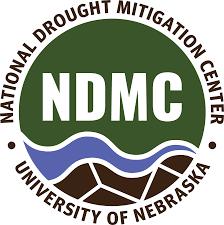

Drought for Kids
A comprehensive look at drought for younger readers developed by the National Drought Mitigation Center. Topics include defining drought, impacts, research, mitigation, and a glossary of drought terminology.
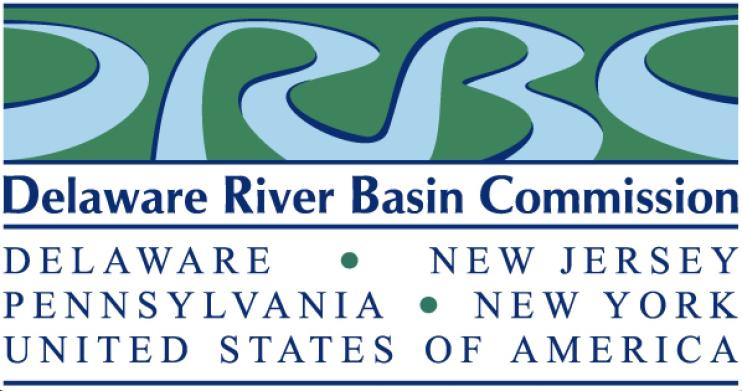
Drought Info for Kids
An in-depth website on drought prepared by the Delaware River Basin Commission for younger readers. Content includes discussions on defining drought, water conservation, impacts on ecosystems, a word scramble game, and links to drought-related activities.

Drought | Resource Library Encyclopedic Entry
National Geographic’s introduction to drought and its causes and impacts includes information on historic droughts and how drought is monitored and measured. Includes multimedia links to international maps, photographs, and other materials.
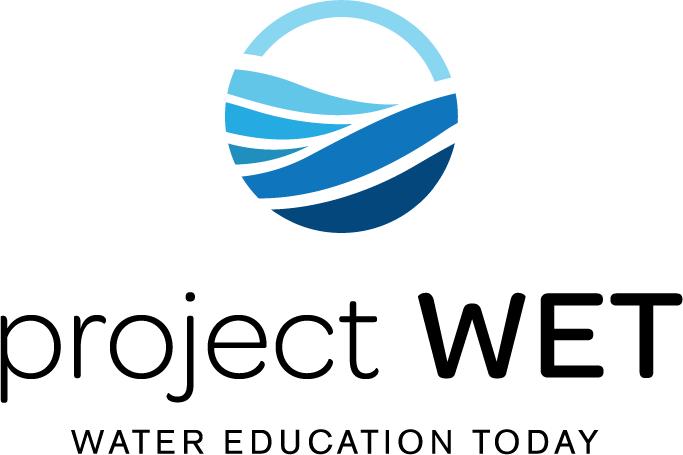
Water Education for Teachers
Water resource education materials produced by Project WET that promote awareness of water and support community action to solve complex water issues.

Drought: Unit Overview
A lesson plan by EarthLabs for teaching or learning drought science through data analysis activities, satellite imagery and computer visualizations, and hands-on experiments that illustrate Earth processes.

Drought Beyond Borders Lesson Plan
A lesson plan (PDF format) developed by the University of Arizona and adaptable for 4th–8th grades, with a goal of exploring the concept of drought and climate variability and examining the social and environmental consequences of drought. Interactive lessons emphasize questions, discussions, group work, and problem-solving.
Geared toward students who live in southern Arizona and northern Sonora, with case studies specific to the Santa Cruz watershed.

CLEAN Climate and Energy Educational Resource Collection
The Climate Literacy and Energy Awareness Network (CLEAN) aims to "steward the collection of climate and energy science educational resources and to support a community of professionals committed to improving climate and energy literacy." Search for educational resources related to climate and energy (including drought), teaching guides, lesson plans, and more.
Additional Resources
Resources for general audiences.
Drought Resource Community American Water Works Association
This page is intended to keep the water industry in the know about tools, issues, and developments related to drought and water shortages. Includes links to various response and contingency plans, volunteer groups, events, and publications.
Drought Preparedness & Water Conservation American Red Cross
This website from the American Red Cross offers general drought information and water conservation tips.
The Community Collaborative Rain, Hail, and Snow Network (CoCoRaHS)
CoCoRaHS is a non-profit, community-based network of volunteers of all ages and backgrounds who work together to measure and map precipitation (rain, hail, and snow). Using low-cost measurement tools, stressing training and education, and utilizing an interactive website, CoCoRaHS’ aim is to provide the highest quality data for natural resource, education, and research applications.
Ready For Drought? A Community Resilience Role-Playing Game National Drought Mitigation Center
A realistic, in-person, role-playing game developed by the National Drought Mitigation Center in which players work together to solve problems caused by drought. This game supports building community resilience while improving players’ critical thinking and improving civic resilience related to drought response by giving players experience prioritizing resources, building coalitions, and responding to and assessing the impacts of drought.
Assessing Drought in the United States (Video) CoCoRaHS
How do the experts classify drought? This short animation shows how decision makers use a variety of data and in-person reports to assess the drought conditions across the U.S. It explains factors considered by U.S. Drought Monitor authors when they categorize drought as moderate (D1), severe (D2), extreme (D3) or exceptional (D4).
Reading List
The Time it Never Rained by Elmer Kelton. A novel about ranchers and farmers struggling through a Texas drought in the 1950s, based on actual events.
The Worst Hard Time: The Untold Story of Those Who Survived the Great American Dust Bowl by Timothy Egan. A dramatic recounting of the Dust Bowl, set against the Great Depression, told through interviews with several families who endured the disaster. Winner of the National Book Award.
Out of the Dust by Karen Hesse. Told through verse, a young adult novel describes a girl’s experience in drought during the 1930s. Newbery Medal winner.
Cadillac Desert: The American West and Its Disappearing Water by Marc Reisner. A study of the economics, politics, and ecology of water in the American West.
Looking for State or Local Maps?
The Current Conditions page features national conditions. You can also explore maps of current and future conditions by state , watershed , county , or city .
4. Droughts and Desertification
Areas at risk: regional and local scales.
Drought risk Map – source
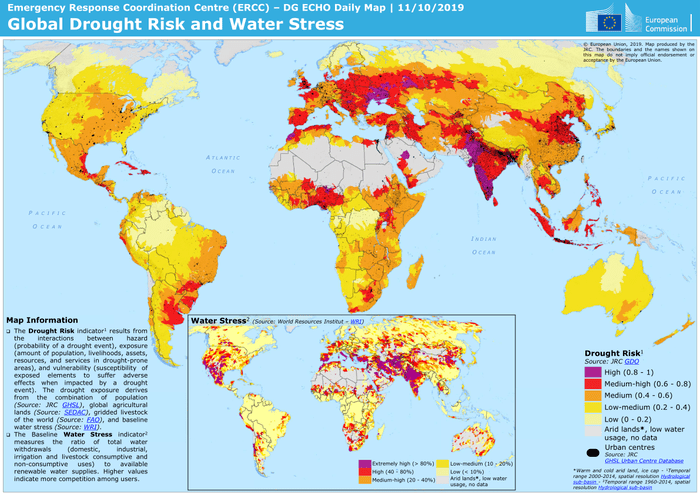
Compare the above map with the one below of Total Annual Rainfall – source
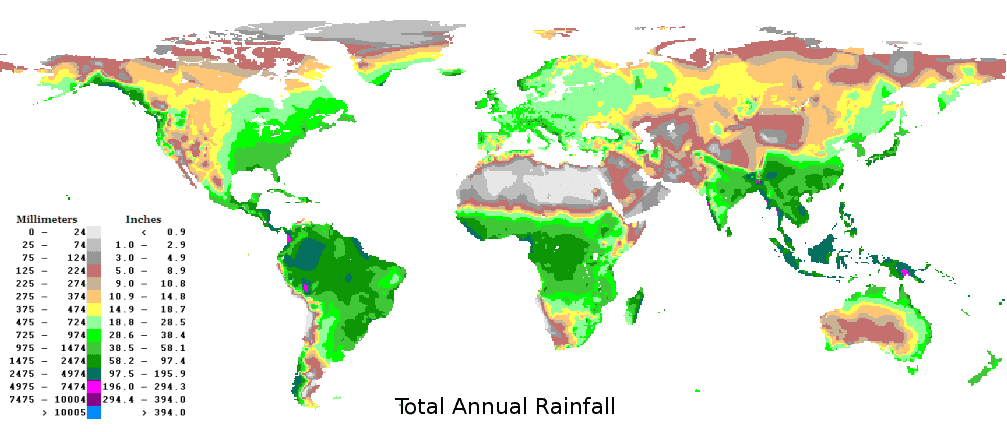
Source: http://www.eldoradocountyweather.com/
Causes of droughts
Causes of desertification
Effects of droughts and desertification on people and the environment
Management strategies – case studies.
Drought: Identifying Impacts and Evaluating Solutions
PBS, WGBH Educational Foundation

In this set of activities, students learn about impacts of drought through news videos of communities facing serious water shortages, analyze drought data and models, and research and evaluate potential solutions. This lesson works well as a component within a larger unit on climate change, its impacts, and ways to address the resulting issues.
Notes from our reviewers
The CLEAN collection is hand-picked and rigorously reviewed for scientific accuracy and classroom effectiveness. Read what our review team had to say about this resource below or learn more about how CLEAN reviews teaching materials .
- Teaching Tips Even though the lesson is designated for grades 9-12, it could be used in grades 6-8. An explicit teacher guide/script is provided in the procedures. Teacher may want to preview the videos and printout accompanying handouts for each case study. Before watching the Case Study videos, it should be emphasized that technical lessons of drought will be taught through worksheets and lecture, not the videos. Rather, the take away from the videos are an account of how humans can be affected by drought.
- About the Science In these activities, students learn about the different drought characterizations and causes of drought based on both climate patterns and human interaction with the environment. The lesson discusses solutions to drought that are being explored and how these solutions are connected to different drought characterizations. These lessons do a great job of incorporating state-of-the-art science into the lesson plan. There is a great use of data from NOAA to visualize drought across the United States. The presentation does a nice job of showing how different types of drought, e.g. meteorological and agricultural, are interconnected. The study cited data when appropriate except in slides 3 & 6 of the presentation. Drought is covered in a great deal of depth in this resource and allows students to develop an intimate understanding with the subject. Comments from expert scientist: Good use of case studies from a variety of regions. Numerous small and larger scale solutions are presented, some of which are short term and some are currently short-term but may become longer term. Resources are finite and population growth is exponential, so long-term solutions will be necessary. Drought is cyclic and it would be useful to emphasize that longer-term solutions - changes in behavior will be necessary because long term uncontrolled population growth will lead to future drought impacts even in the absence of reduced precipitation.
- About the Pedagogy Students learn about the impacts of water shortages due to drought, make connections to climate patterns, and explore solutions that increase communities' capacities to respond to drought. The lesson procedure provides the ability for students to learn about both what drought is and how to mitigate the negative effects of drought. The case studies allow for students to see the effect drought has on communities. Since the three regions that are covered by the videos may not be in the students' own community, the extension activity provides a venue to explore the above mentioned topics in their community.The videos provide great visual references if students have not actually experienced a severe drought in their community. Uses the 5E model to teach on water availability, impacts of drought, patterns of drought, and the identification and evaluation of solutions. Case-studies, individual or small group work, open, whole group discussions are encouraged. Due to the use of the 5E model, the sequencing is well organized. The main lesson, as well as the extensions, allow for independent research. The handouts provide a vehicle for students to express their scientific impressions of the videos. Through videos, lectures, and worksheets the lesson plan appeals to multiple types of learning. The procedure includes example answers for assessment of student answers, but does not provide a clear avenue for how assessment can be conducted in this lesson. A diverse population is represented in the videos.
- Technical Details/Ease of Use Resource is available online but does have optional download capabilities. Integrated share to Google Classrooms button. Also can be assigned through Remind, social media platforms, or with the PBS LearningMedia Lesson Builder Tool. All videos have the capability of closed captioning and/or printable transcripts. The materials are of high technical quality.

Press ESC to close
Or check our popular categories....

Geography grade 11 research task 2024 memorandum about drought
Jiunge hapa kwenye channeli yetu ya whatsapp ili uweze kupata taarifa kwa haraka, geography grade 11 research task memorandum about drought, click here to watch the may/june time table and how to pass exams.
Introduction:
The aim of a research task is to enable learners to acquire skills in research, analysis, interpretation, and communication
( ALL GRADE PAST PAPERS VIEW HERE)
Subtopics and possible questions:.
When it comes to a research task on drought, some possible subtopics and questions that learners can explore include:
- Causes of drought:
- What are the different types of drought?
- What are the physical and human causes of drought?
- How does climate change impact drought?
- Impacts of drought:
- What are the social, economic, and environmental impacts of drought?
- How do different regions and communities experience drought differently?
- What are the short-term and long-term effects of drought?
- Management strategies for drought:
- What are the different drought management strategies used in different regions?
- How effective are these strategies?
- What are the challenges and limitations of drought management?
Geography grade 11 research task 2024 memorandum about drought;
The project is a scientometric study that analyses the current research practice in geography using quantitative and qualitative methods. It is based on the assumption that scientific research is necessarily embodied in publications and that the latter are therefore suitable indicators of research practice. Tzobserver.com provides a comprehensive collection of National, Western Cape (WC), Kwa-Zulu Natal (KZN), Gauteng (GP), Eastern Cape (EC), Mpumalanga (MP), North West (NW), and Free State (FS). This page makes it simple to find the Memorandum and geography Question Paper 1 because they are organized by year and exam month. View or download all pdf for the Grade 12 geography research project about informal sector memo pdf
GET BONUS by clicking the invitation button to share with your school friends, You are free to let your schoolmates know about this website BY giving them this link; INVITE HERE
It’s indeed important for students to have the Geography grade 11 research task 2024 memorandum about drought
Previous exams are crucial for students and a great teaching tool for determining understanding. The following are some reasons why students can benefit from past papers:
- Because they will be aware of the questions, it helps the student gain confidence when taking tests.
- Knowing one’s strengths and shortcomings is beneficial to the student.
- Through the questions he faces in these past papers, it encourages the student to build the capacity to respond to a variety of queries.
The Geography grade 11 curriculum focuses on similar areas of skills, knowledge, and values
How to download Geography grade 11 research task 2024 memorandum about drought
How to access the questions papers:.
The research task will usually be provided by the teacher or educator, and learners will be required to work on it independently or in groups. The task will typically include instructions on the research question, methodology, and requirements for the final report.
- GO to your Geography grade 11,
- Click the specific year of past paper or project you want ,
- Then click download
DOWNLOAD HERE
Sample task here.
To: Grade 11 Research Task Students
Subject: Drought Research Memorandum
Dear students,
As part of your Grade 11 research task, you have been assigned to research and write a report on the topic of drought. Drought is a natural disaster that affects millions of people and has far-reaching consequences on the environment and the economy. Your research should cover the following aspects of drought:
1. Definition and Causes: Provide a definition of drought and explain the different types of drought. Investigate the causes of drought, including natural causes such as climate variability and human causes such as deforestation and over-extraction of groundwater.
2. Impact on the Environment: Describe the environmental impacts of drought, including the loss of vegetation, soil erosion, and the depletion of water resources. Investigate how drought affects wildlife and biodiversity.
3. Impact on the Economy: Analyze the economic impacts of drought, including the effects on agriculture, tourism, and energy production. Investigate the costs of drought and the strategies that governments and communities use to mitigate these costs.
4. Mitigation and Adaptation: Investigate the strategies used to mitigate the impacts of drought, including water conservation, drought-resistant crops, and alternative water sources. Discuss how communities can adapt to drought and manage water resources more sustainably.
Your report should be well-researched and supported by credible sources. You should use both primary and secondary sources, such as scientific articles, government reports, and interviews with experts in the field. Your report should be presented in a clear and concise manner, with appropriate citations and references.
If you have any questions or concerns about this research task, please do not hesitate to contact me. I look forward to reading your reports and learning more about the important issue of drought.
How to prepare for exams:
To prepare for exams on geography research tasks, learners should:
- Understand the research process: learners should be familiar with the research process, including the steps involved in data collection, analysis, and interpretation.
- Develop critical thinking skills: learners should be able to analyze and evaluate information critically, and draw logical conclusions from the data.
- Practice effective communication: learners should be able to communicate their findings clearly and effectively, both in writing and verbally.
- Familiarize themselves with the curriculum: learners should be familiar with the curriculum and course content, and ensure they have a good understanding of the key concepts, theories, and principles.
- Seek assistance when needed: learners should not hesitate to seek help from their teacher or peers if they are struggling with any aspect of the research task or exam preparation.
Categorized in:
Like what you read?
Subscribe to our whatsapp news.
Subscribe to our WhatsApp channel to get the latest posts delivered right to your dm.
Previous Article
Blueprint.gov.za payslip south africa, next article, geography grade 12 research task 2024 memorandum north west.
- Mindset Network
- Drought & Desertification
- The atmosphere
- Learn Xtra Lessons
- Exam Revision
- Geographical Skills and Techniques
- Geomorphology
- Development geography
- Resources and sustainability
- Climate and weather
- Term 1 Revision
- Rural Settlement and Urban Settlement
- Term 2 Revision
- Economic Geography of South Africa
- Term 3 Revision
Disabled Feature
This functionality is only active if you sign-in with your Google account.
Related Resources

Connect with social media
Sign in with your email address.
- Create new account
- Request new password

COMMENTS
The Impact of Drought in South Africa Research Grade 11. Understanding Drought; Before diving into the impacts of drought, it is essential to understand what drought is and how it is classified. Drought is a prolonged period of abnormally low rainfall, leading to a shortage of water. Droughts can be classified into three main types:
Drought and desertification - Module 4 1. Climate Change: Changes in global climate patterns, such as shifts in precipitation ... Development Geography grade 11 Rasila Secondary school. Geography 100% (18) Recommended for you. 65. Gr.11 Life Sciences Answers for the Remote learning booklet - Terms 1 - 4. Geography 100% (6) 19.
The Geography Grade 11 Research about Drought Memorandum is a task on the drought that aims to equip learners with skills in research, analysis, interpretation, and communication. Learners will be expected to demonstrate their understanding of drought, its causes, impacts, and management strategies. This research task will require students to ...
Grade R Grade 1 Grade 2 Grade 3 Grade 4 Grade 5 Grade 6 Grade 7 Grade 8 Grade 9 Grade 10 Grade 11 Grade 12 BROADCASTS Online, Radio & TV
Download Geography Grade 11 Research About Drought Memorandum. February 13, 2024 by Hlulani. Drought, a period of abnormally dry weather, casts a long shadow across the globe, impacting not just landscapes but also communities, ecosystems, and economies. As a Geographer embarking on my Grade 11 research journey, I delve into this pressing issue ...
This assignment was passed with. 100% introduction africa is continent facing the risk of drought and desertification for many years. climate, geography and. Skip to document. ... Grade 11 Research final Mtileni. This assignment was passed with. 100% ... TMS 3728 assignment 3; Geography Grade 12 Trial 2021 P1 and Memo; GGH1501 Ass 01 Sem 2 ...
Conclusion. South Africa is a country that is susceptible to drought due to its semi-arid climate, which makes it vulnerable to the effects of climate variability and change. Drought has significant impacts on the country's social, economic, and environmental systems. This research task aims to equip Grade 11 learners with skills in research ...
1 Directorate: Curriculum FET SUBJECT AND GRADE GEOGRAPHY GRADE 11 TERM 1 Week 5: Lesson 5 SUBJECT Droughts and desertification PURPOSE OF THE LESSON • To strengthen your knowledge, understanding and interpretation of droughts and desertification • To understand the causes and effects of droughts and desertification SOURCES Paper based sources Digital sources
Drought & Desertification. Xtra Gr 11 Geography: In this lesson on Drought and Desertification we assess which areas are prone to drought and desertification. We look at causes of droughts and links to El Nino. We consider the causes of desertification and the role of humans. We use examples of the effects of droughts and desertification on ...
Drought as a stress affect seed germination, resulting in poor crop emergence, reduction of plant stands below the optimum, increased presence of weeds and, ultimately, reduced yield and quality of commercial corn. Drought effect on crop production Figure 1: Crops in rainy season.
A lesson plan (PDF format) developed by the University of Arizona and adaptable for 4th-8th grades, with a goal of exploring the concept of drought and climate variability and examining the social and environmental consequences of drought. Interactive lessons emphasize questions, discussions, group work, and problem-solving.
Grade 11 LEARNER SUPPORT Revision Term 1 - 2021 THE ATMOSPHERE This revision program is designed to assist you in revising the critical content and skills covered during TERM 1. The purpose is to prepare you to understand the key concepts and to provide you with an opportunity to establish the required standard and the application
Grade 11 CAPS > Climate and Weather > Geography CAPS > 4. Droughts and Desertification. Areas at risk: regional and local scales; Causes of droughts ... the environment; Management strategies - case studies. Areas at risk: regional and local scales. The global water crises. Drought risk Map - source. Compare the above map with the one below ...
Grade 11 Geography: Drought and Desertification Notes. Course. Geography. Institution. 11th Grade. This document includes detailed notes, labelled diagrams and definitions of all drought and desertification content including causes and effects, management strategies, El Nino and La Nina. I achieved over 90% using these notes.
NSC - Grade 11 1.3.4 Africa urgently need to address the problem of drought. In a paragraph of approximately EIGHT lines, describe on how to sustainably reduce the impacts of drought. (4 x 2) (8) 1.4 Refer FIGURE 1.4 showing case study on landslides. 1.4.1 Describe the term landslide (1 x 2) (2) 1.4.2 Where do landslides generally occur?
In this set of activities, students learn about impacts of drought through news videos of communities facing serious water shortages, analyze drought data and models, and research and evaluate potential solutions. ... Grade level. Middle (6-8) High School (9-12) College Lower (13-14) Literacy and Resources. Relation Link https://cleanet.org ...
View GRADE 11 GEOGRAPHY RESEARCH 2021 EDITED (1).docx from GEOGRAPHY 1 at University of Pretoria. Research Task Gr 11 GDE / FEB - MAR 2021 TYPE OF TASK: RESEARCH DRAFT OF INSTRUCTIONS AND INFORMATION ... GRADE 11 Curriculum content: Drought Drought caused by El Nino threatening southern Africa: UN February 12, 2016 Across large parts of ...
Memorandum - Grade 11 (b) LAÑINA-an unusual cooling of surface water in the eastern Pacific, accompanied by stronger upwelling (Concept) (1 x 2) (2) 2.7.2 Flooding (1 x 2) (2) 2.7.3 Droughts lead to veld fires and smoke can affect health of people ... Drought lead to crop failure that leads to poverty
GEOGRAPHY - GRADE 11 2024 TOPIC ASSESSMENT STANDARDS ... PHASE 2 (11 March 2024 - 31 May 2024) Geomorphology Topography associated with massive igneous rocks Task 3: Research Assignment 8 - 12 April Task 4: Mid-yearDevelopment issues and challenges Exams 13 - 31 May
To: Grade 11 Research Task Students. Subject: Drought Research Memorandum. Dear students, As part of your Grade 11 research task, you have been assigned to research and write a report on the topic of drought. Drought is a natural disaster that affects millions of people and has far-reaching consequences on the environment and the economy.
Drought & Desertification. Xtra Gr 11 Geography: In this lesson on Drought and Desertification we assess which areas are prone to drought and desertification. We look at causes of droughts and links to El Nino. We consider the causes of desertification and the role of humans. We use examples of the effects of droughts and desertification on ...
FORMAL ASSESSMENT PROGRAMME: GEOGRAPHY GRADE 11 (2014) This Assessment Programme reflects the seven formal assessment tasks required for the Portfolio which is to be submitted for review and moderation at the end of each phase. Teachers will also assess informally and formatively on a day-to-day basis. The following assessment tasks are ...
Grade 11 notes on Drought and Desertification. Colour coded, easy to follow and understand. Grade 11 notes on Drought and Desertification. Colour coded, easy to follow and understand. ... MNG3702 Assignment 02 solutions 2021; MNP3702 - Supply Chain Alignment; Unisa - MNG3702; Economics Ecs1601; ECS1601 - Economics IB; ECS1601 - SUMMARY;